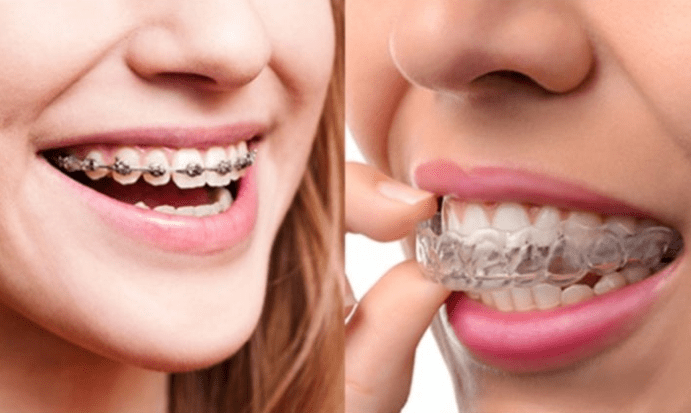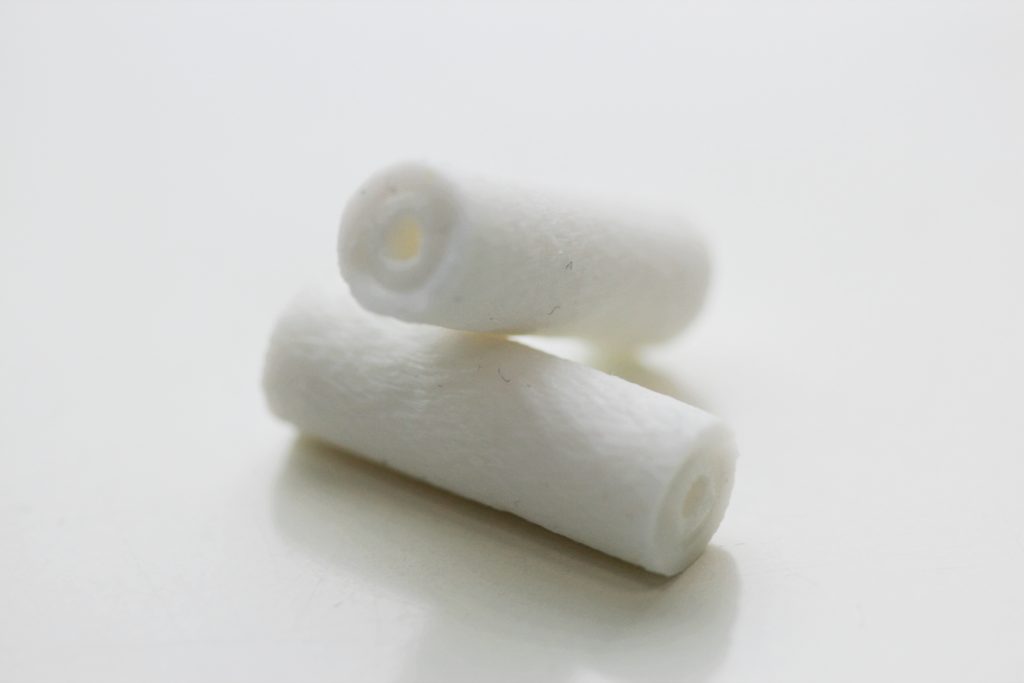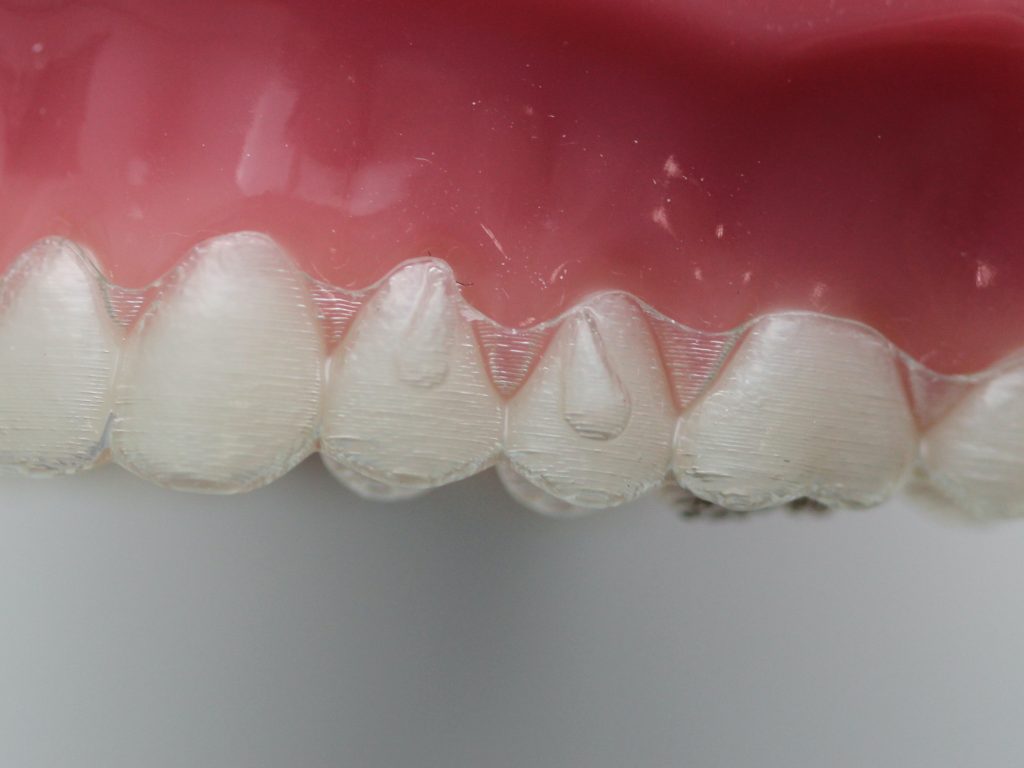Straightening teeth with Invisalign can be pretty different from traditional braces, but it’s an excellent option for people who want to straighten their teeth discreetly.
First, let us look at the differences between Invisalign and traditional braces.
Appearance:
Traditional braces: They consist of metal or ceramic brackets that are attached to the teeth, connected by wires and, sometimes, rubber bands. The metal brackets and wires are visible when you smile, making them more noticeable. Traditional braces work by applying constant pressure to the teeth, which causes the bone surrounding the teeth to remodel and adapt to the new position. This process can take anywhere from a few months to several years, depending on the severity of the dental issue being treated and the individual patient’s needs. During the treatment, patients are required to visit their orthodontist regularly for adjustments and progress assessments.
Invisalign: Invisalign is a modern, innovative orthodontic treatment that offers an alternative to traditional braces. It uses a series of clear, removable aligners to gradually shift teeth into their desired positions. Invisalign has gained popularity due to its discreet appearance and the flexibility it offers compared to traditional braces. The treatment is suitable for both teenagers and adults with mild to moderate dental misalignment issues. Invisalign offers several advantages, such as being nearly invisible, allowing for easier oral hygiene, and providing a more comfortable experience compared to traditional braces. However, it may not be suitable for everyone, particularly those with severe malocclusions or other complex orthodontic issues. The treatment duration and cost may also vary depending on the specific case and individual factors.
Removability:
Traditional braces: They are fixed to your teeth and can only be removed by your orthodontist. With traditional braces, you’ll have to wear them 24/7 throughout your treatment.
Invisalign: The aligners are removable, allowing you to take them out when eating, drinking, brushing, and flossing. Hence, it provides more flexibility and makes it easier to maintain oral hygiene.
Comfort:
Traditional braces: The brackets and wires can sometimes cause discomfort, irritation, or even injury to the soft tissues inside the mouth. Adjustments made during orthodontic appointments can also cause temporary soreness.
Invisalign: The aligners are made of smooth plastic, which is generally more comfortable. There are no sharp edges or wires that could cause irritation. However, some people may experience mild discomfort when changing to a new set of aligners.
Effectiveness:
Traditional braces: They are highly effective for treating a wide range of orthodontic issues, including severe misalignments, crowding, and bite problems. They offer more control over tooth movement, making them suitable for complex cases.
Invisalign: They are also effective in treating many orthodontic issues but may not be suitable for very complex cases or severe bite problems. Invisalign is often a better option for mild to moderate misalignments.
Cost:
Traditional braces: The cost of traditional braces varies depending on the type of braces (metal or ceramic), and the complexity of the case. They are generally more affordable than Invisalign.
Invisalign: The cost of Invisalign is typically higher than that of traditional braces, reflecting the custom fabrication of the aligners and the advanced technology involved.
Maintenance:
Traditional braces: Brushing and flossing can be more challenging with braces, but it’s essential to maintain good oral hygiene. Special tools like interdental brushes and floss threaders can help. You must also watch your diet and avoid certain hard or sticky foods to prevent damaging your braces.
Invisalign: Since the aligners are removable, you can brush and floss as usual. You’ll also need to clean your aligners regularly.
Life with Invisalign
Now that you’re set on Invisalign, here are some points to take note of and tips for living with Invisalign:
You’ll need to wear your aligners for at least 22 hours a day: Invisalign aligners are removable, but you should only take them out when eating or brushing your teeth. That means you’ll need to wear them for most of the day and night because the plastic aligners require constant force to shift the teeth. Be consistent and diligent about wearing your aligners to achieve the best possible results.
TIP: Make it a habit to wear the aligners right after eating or brushing your teeth.
Keep track of your aligners: Always store your aligners in their case when not in use to avoid misplacing or damaging them. This will also help keep them clean and away from pets or small children who may find them.
You’ll need to use a chewie every time after you put on the aligners: A Chewie (or Chewy) is a small cylindrical device made of a soft, pliable material used together with Invisalign or other clear aligners. The chewie helps to seat the aligners more securely on the teeth and can also help improve the fit and effectiveness of the aligners.
To use a Chewie, a patient bites down on the device for several minutes after they put on the aligners, gently chewing and applying pressure to the aligners. Using the chewie can help push the aligners into the correct position and ensure a snug and perfect fit.
TIP: Be systematic when using the chewie (from left to right) for an even pressure throughout the aligners.
Orthodontists often provide chewies to their Invisalign patients by including them in the treatment plan, or patients can purchase them separately. They are typically made of a soft, medical-grade plastic material and are disposable when it becomes limp.
You may experience some discomfort: Like with any orthodontic treatment, you may experience some discomfort, such as soreness, when you first start wearing your aligners or switch to a new set. The pain is normal, but you can take over-the-counter pain medication to feel better.
Change your aligners as instructed: You’ll receive new sets of aligners to change every 1-2 weeks until you next see your orthodontist. You’ll need to wear them in sequence to gradually move your teeth into the desired position. Your orthodontist will provide a schedule for when to change your aligners. Stick to this schedule to ensure that your treatment progresses as planned.
TIP: Change your aligners at night before bed to minimise feeling discomfort.
You’ll need to avoid certain foods: While you can remove your aligners to eat, you’ll need to avoid certain foods that could damage or break the attachments, such as nuts, ice, or popcorn.
Attachments, or buttons, are small tooth-coloured shapes of dental composite material attached to specific teeth during Invisalign treatment. Orthodontists typically remove the attachments when treatment is over or during refinement stages when the teeth have moved into the ideal positions.
Invisalign attachments are a vital part of the Invisalign treatment process. They can help improve the effectiveness of the treatment by providing additional anchors or force to shift teeth into proper positions.
You’ll need to visit your orthodontist regularly: Your orthodontist will monitor your progress and make sure your treatment is on track. You’ll need to see them every 4-6 weeks to receive new aligners and check your progress. Attend all of your scheduled orthodontist appointments to monitor your progress and make any necessary adjustments to your treatment plan.
Your speech may be affected at first: Some people experience a slight lisp or difficulty speaking when they first start wearing their aligners, but this typically disappears within a few days. Your tongue will need time to adjust to the aligners. Wear your aligners consistently so your tongue can learn to speak with them.
TIP: Practice speaking and enunciating words to help speed up this process.
Overall, living with Invisalign requires some extra care and attention, but it’s an excellent option for people who want to straighten their teeth without the appearance of traditional braces. You can achieve a beautiful, straight smile with proper care and regular orthodontic visits.
Life after Invisalign
After completing your Invisalign treatment, you can expect straighter, healthier teeth and a more confident smile. However, the work doesn’t stop there. Here are some things to keep in mind as you transition to life after Invisalign:
Retainers: After completing the Invisalign treatment, you will need to wear a retainer to maintain the position of your teeth. Your orthodontist will provide instructions on wearing and caring for your retainer, which you must follow to keep your teeth straight.
Diet: While undergoing Invisalign treatment, you had to avoid certain foods and drinks that could stain or damage the aligners. After completing treatment, you can enjoy these foods again, but it’s still important to maintain a healthy diet to keep your teeth and gums strong. Avoid eating sugary food, which may cause tooth decay.
Oral hygiene: Good oral hygiene is essential to maintain the health of your teeth and gums. Brush your teeth at least twice a day and floss daily. Regular dental check-ups and cleanings are also essential to keep your teeth and gums healthy.
Follow-up appointments: After completing your Invisalign treatment, you will still need to see your orthodontist for follow-up appointments to ensure that your teeth are maintaining their position. Be sure to attend these appointments to maintain the health of your teeth and the longevity of your Invisalign results.
Confidence: One of the most significant benefits of Invisalign treatment is the confidence that comes with having a straighter smile. After completing treatment, you may find that you feel more confident in social and professional settings.
In summary, life after Invisalign is about maintaining the health and beauty of your new smile. This is achieved by wearing retainers, good oral hygiene, and regular check-ups with your orthodontist. Embrace your newfound confidence and enjoy your straighter, healthier smile!
In fact, there have been numerous studies which show the positive impact on straight teeth and your success in life. These studies suggest that an attractive smile, which includes straight teeth, can influence people’s perceptions and judgments in different situations, including job interviews and career advancement.
-
Oral Health and Well-Being in the United States, American Dental Association (2015): This report found that people with poor oral health and dental appearance were less likely to get hired or promoted compared to those with good oral health and dental aesthetics.
-
A study by Beall Research and Training (2012) found that people with straight teeth were perceived as more successful, smarter, and having more dates than those with crooked teeth.
-
In a study published in the American Journal of Orthodontics and Dentofacial Orthopedics (2008), researchers found that people with an ideal smile were considered more intelligent and had a greater chance of finding a job compared to those with a non-ideal smile.
-
A study published in the Journal of Economic Psychology (2007) investigated the “beauty premium” and “plainness penalty” in the labor market. The study found that attractive individuals enjoyed a wage premium, while less attractive individuals experienced a wage penalty.
At About Braces, we provide patients with affordable Invisalign packages to achieve their desired smiles. We understand that starting Invisalign can be daunting to some, so we strive to give our patients the best orthodontic care and feel comfortable while receiving treatment.
Contact us at 6397 7177, enquiry@aboutbrace.org, or click the WhatsApp icon at the bottom right to learn more! We look forward to starting your Invisalign journey with us 😊







